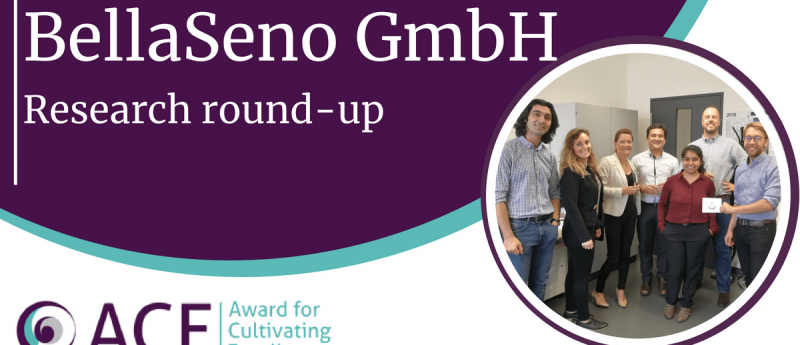BellaSeno GmbH: research round-up

In this article, we summarize key papers from the winner of the 2018 Award for Cultivating Excellence, BellaSeno GmbH.
Visit BellaSeno GmbH’s full feature>>
2011: CAD/CAM-assisted breast reconstruction
Laser scanning is an ideal method for creating high-quality and detailed 3D images, and in this work was utilized in conjunction with computer-aided design and manufacturing (CAD/CAM) to produce a patient-specific intraoperative mold for breast reconstruction. Melchels et al demonstrated the feasibility of the technique in this 2011 article and also used the data to fabricate a customized scaffold for tissue engineering.
Melchels F, Wiggenhauser PS, Warne D et al. CAD/CAM-assisted breast reconstruction. Biofabrication. 3, 034114 (2011)
2013: Breast Reconstruction Using Biofabrication-Based Tissue Engineering Strategies
Biofabrication was published in 2013 and covers emerging technologies in biomanufacturing. Chapter 10, by Chhaya et al discusses the potential application of tissue engineering to breast reconstruction via vascularized tissue. The authors highlight manufacturing techniques that can be used to produce a suitable supportive scaffolds and the strategies being employed in the development of long-term sustainable adipose tissue.
Chhaya MP, Melchels FPW, Wiggenhauser PS, Schantz JT, Hutmacher DW. Breast Reconstruction Using Biofabrication-Based Tissue Engineering Strategies. In: Biofabrication. Forgacs G, Sun Wei (Eds). Elsevier, Burlington USA. 183-216 (2013)
2015: Additive manufacturing in biomedical sciences and the need for definitions and norms
Consistent terminology is crucial for an industry to grow and develop, and enable sharing of knowledge. However, with any rapidly growing field in which advances can be made regularly and concurrently, this can be a challenge. In this 2015 special report, Chhaya et al present the case for standardizing industry terminology and, by doing so, encourage national and international agencies to work together to develop tailored and global standards.
Chhaya MP, Po PS, Balmayor ER, van Griensven M, Schantz JT, Hutmacher DW. Additive manufacturing in biomedical sciences and the need for definitions and norms. Expert Rev Med Devices. 12(5):537-4 (2015)
2016: Polylactides in additive biomanufacturing
In this 2016 review, Poh et al discuss challenges in additive manufacturing (AM) and the progress of academic and industry interests in revolutionizing the AM industry. Much progress has been made since AM was first introduced, but further development of biomaterials, software and hardware, and their streamlined integration, are crucial for the manufacture of fully functional tissue. The authors also discuss their recommendations for future research foci to expedite this revolution and bring the benefits of AM to patients.
PSP Poh, MP Chaya, FM Wunner et al. Polylactides in additive biomanufacturing. Adv. Drug Deliv. Rev. 107, 228-246 (2016)
2017: Breast Augmentation and Reconstruction from a Regenerative Medicine Point of View: State of the Art and Future Perspectives
Breast reconstruction and augmentation are very common procedures, both for purely cosmetic reasons and as a result of medical procedures such as a mastectomy. However, existing methods are far from perfect; silicone implants can have significant local complications and lipofilling has limited utility due to volume loss. Regenerative techniques utilizing tissue engineering may provide alternative approaches, and broaden patient choice. The current state of the art is presented in this 2017 review.
Visscher LE, Cheng M, Chhaya M et al. Breast Augmentation and Reconstruction from a Regenerative Medicine Point of View: State of the Art and Future Perspectives. Tissue Eng Part B Rev. 23:3 (2017)